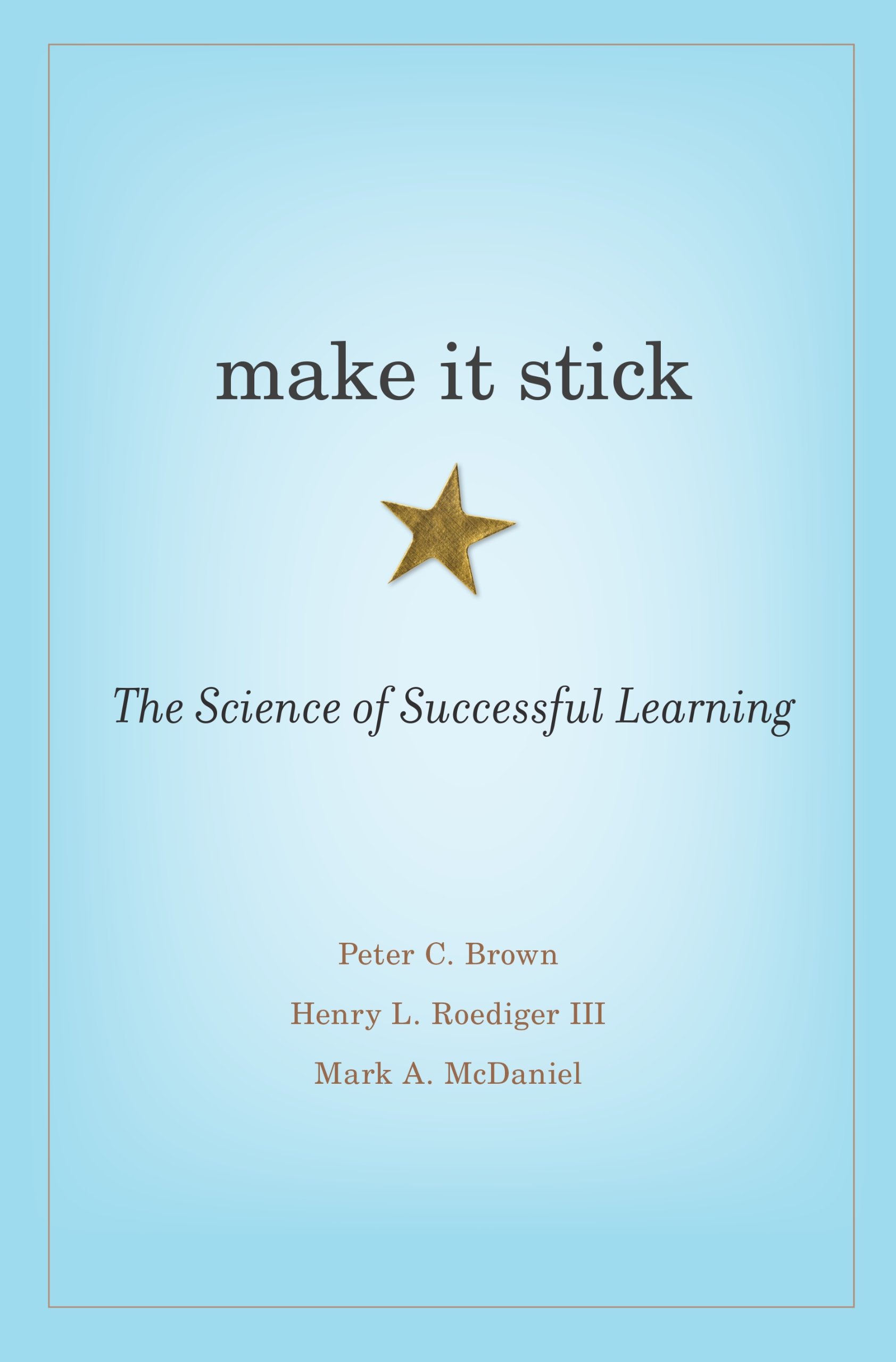Download our free resources for Make it Stick, including:
Discussion questions for each chapter
Sketchnotes for each chapter
Recommended research articles
Want a book with current research and practical teaching strategies? Read Powerful Teaching: Unleash the Science of Learning! Powerful Teaching is authored by our Founder, Pooja K. Agarwal, Ph.D. (cognitive scientist) and Patrice M. Bain, Ed.S. (veteran K-12 teacher), who have collaborated with the authors of Make it Stick for more than 15 years. Join our Make it Stick Facebook group and our Powerful Teaching Facebook group, too.
Want the newest research? Check out our list of 10 recommended journal articles by women, BIPOC, and LGBTQ cognitive scientists.
Chapter 1
A common myth about learning is that re-reading is an effective study strategy – but it’s not. Re-reading gives students confidence that they know something when they actually don’t, a key example in which “Learning is Misunderstood.”
Chapter 2
In “To Learn, Retrieve,” the authors describe retrieval practice research in authentic classrooms. Experiments in a K-12 school district demonstrated that retrieval practice raised students' grades from a C+ to an A-, with benefits lasting for an entire school year.
Chapter 3
For this recommendation, “Mix Up Your Practice,” the authors present research on two robust teaching strategies: spacing and interleaving. Research demonstrates that simply spacing out or rearranging concepts to be taught can yield a large boost in learning.
Chapter 4
In this chapter, the authors encourage readers to “Embrace Difficulties” during learning. One example is the myth of errorless learning. Contrary to popular belief, making errors during retrieval is a good thing for learning. In one experiment, students made errors while studying, which improved their learning, yet they didn't recognize this benefit.
Chapter 5
Students need to “Avoid Illusions of Knowing.” Students consistently predict higher test performance following ineffective strategies (e.g., re-reading) compared to more effective strategies (e.g., retrieval practice). Numerous studies reveal that students drop flashcards too fast due to poor metacognition and awareness of their own knowledge.
Chapter 6
Now is the time to “Get Beyond Learning Styles.” There is no empirical evidence that teaching students consistent with their “learning style” will improve learning. In contrast, methods supported by scientific evidence – including retrieval – are robust and reliable methods that improve student learning in the classroom.
Chapter 7
In this chapter, the authors reveal how to “Increase Your Abilities.” One method they highlight is a growth mindset, or the belief that learning and intelligence are malleable rather than fixed. Growth mindset encourages students to focus on learning and growing with increasing challenges, rather than performance at one point in time. This pays off in increased student learning and persistence over time.
Chapter 8
In the final chapter, called “Make it Stick,” the authors provide tips for teachers, students, and trainers. In collaboration with two of the authors from Make it Stick, our Retrieval Practice Guide highlights some of the tips included in the book. We encourage you to read Make it Stick for more research and recommendations to transform student learning.
Want more cognitive science? Check out our list of 10+ book recommendations!
As an Amazon Associate, we earn from qualifying purchases. Any fees earned will be used to cover costs associated with retrievalpractice.org. Thank you for your support.


